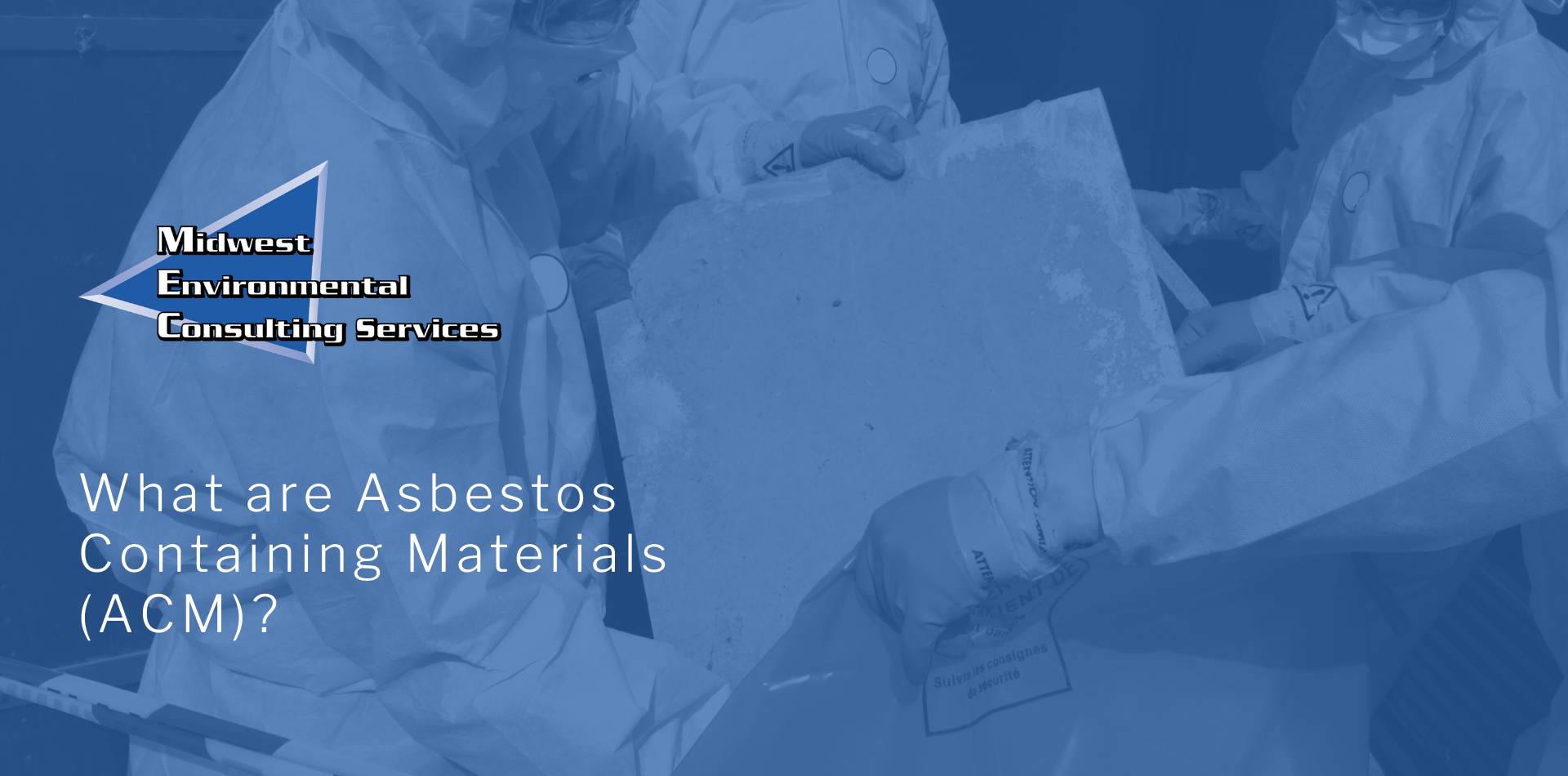If you’re a homeowner or have ever worked in the construction industry, you’ve probably heard people refer to asbestos or asbestos containing materials (ACMs). While most people are aware that asbestos is potentially dangerous, and something you don’t want in your place of residence or on your job site, it’s still not well understood by many.
In this article, we’ll explore the types of asbestos, what common products and building materials may contain the substance, and how to identify common ACMs.
So what actually is asbestos? In short, it’s a heat-resistant silicate mineral used in the production of fire-resistant and insulating material that, when inhaled, can be dangerous to human health.
There are six distinct types of asbestos:
-
Chrysotile
-
Amosite
-
Crocidolite
-
Tremolite
-
Anthophyllite
-
Actinolite
A product or material doesn’t have to contain a high concentration of asbestos in order to be considered an asbestos containing material. The U.S. Department of Labor as well as the U.S. EPA defines an ACM as “any material containing more than 1% asbestos.” Even more strict is OSHA. OSHA considers “any detectable quantity of asbestos to pose a potential health hazard to workers.” Asbestos fibers penetrate the air when ACMs are disturbed, and these fibers are generally undetectable — they can’t be seen, felt, or tasted.
When breathed into the lungs, asbestos can be hazardous to human health. No amount of asbestos is considered safe. Unfortunately, unlike with mold allergies, it’s difficult to tell when you’ve come into contact with asbestos in the air or if it’s in your lungs, since it doesn’t tend to produce noticeable symptoms right away.
That’s why it’s important to know what the common ACMs are, how to test for them, and what to do when asbestos is detected.
Common Asbestos Containing Materials
During the 20th century, ACMs were frequently used in the production of construction and manufacturing products. While asbestos products are still common in the developing world, the U.S. now has regulations in place regarding the use of ACMs; however, only some products are banned.
Although asbestos is now regulated, many older homes built before the 1980s still contain ACMs, and it’s important to know what products and materials in your home could contain asbestos before you disrupt them during a remodel or DIY home project. Although less common, younger homes can still contain ACMs.
Asbestos containing materials have most often been used in construction and insulation; however, some consumer products like sheets, plastic tools and cookware, and talcum powder may also contain the toxic fibrous material.
Some of the most common places to find ACMs in your home include flooring, insulation, popcorn ceilings, drywall, and dust.
Flooring
Finding asbestos in your flooring is all too common, especially if you have an older home. In fact, if you have vinyl floor tiles that were installed between 1952 and 1986 in your home, there’s a definite possibility they contain asbestos.
Although vinyl is the type of flooring most likely to contain asbestos, adhesives containing the substance were also commonly used to install flooring (including carpeting and hardwood) in past decades. One of the most commonly found asbestos containing floor adhesives is something called “black asbestos mastic.”
Insulation
For many years, asbestos was considered an ideal material for insulation purposes because it’s extremely heat- and fire-resistant. It’s also resistant to electricity and chemical corrosion and can be easily combined with other materials to strengthen them and make them more durable.
These properties, along with the fact that it was inexpensive and convenient to source, made asbestos-containing insulation a gem of the construction industry. It is not uncommon to find asbestos in insulation installed during the 20th century.
Some of the most common types of potential asbestos-containing wall and attic insulation include:
-
Vermiculite insulation
-
Cellulose Insulation
-
Loose-fill fiberglass insulation
-
Rock wool insulation
If you’re unsure what type(s) of insulation you have in your home, or if it’s an older home that hasn’t been inspected recently, it’s best not to do anything that may disturb your insulation until it’s been professionally tested for asbestos.
Popcorn Ceilings
Spray-on ceiling texture has historically been very popular in residential construction since it’s an easy way to hide lumps or other imperfections in ceilings. Unfortunately, textured ceilings — commonly referred to as “cottage-cheese ceilings,” “stucco ceilings,” or “popcorn ceilings” — often contain asbestos, especially in older homes.
Spray-applied textured ceilings constructed between 1945 and 1980 are most likely to include asbestos, and can be hazardous to your health should you attempt to demolish or disrupt them. Popcorn ceilings are made of a material that’s very easy to disturb, and you’re likely to release dangerous particles if you try to sand or paint one yourself. That’s a job better left to professionals.
Drywall
Unfortunately, asbestos may be hiding in your walls. If your home was built after 1930, your walls constructed of drywall also known as “wallboard” or “gypsum board”, which is one of the most common suspect ACMs to find in homes. That’s because asbestos was common in drywall manufacturing up through the 1970s and 80s.
Not only can the sheetrock boards comprising your drywall contain asbestos, but more commonly so can the joint compounds used to bind them together. So if you’re thinking of sanding, painting, wallpapering, repanneling, demolishing, or otherwise altering or disturbing the walls in your home, it’s best to look into whether or not they may contain potentially toxic materials.
Tip: Asbestos wasn’t commonly used in drywall. It was occasionally used in drywall. Asbestos was commonly used in the drywall joint compound or “mud,” and can also be found in drywall tape.
Dust/Air
The disruption of asbestos-containing products and materials like flooring, fireproofing, insulation, and drywall can release small fibers into the air, leading to airborne asbestos in your home.
When these tiny, often undetectable fibers become detached from an ACM, they can remain suspended in the air for a significant amount of time before they settle into dust. Inhaling these fibers poses a serious threat to human health, increasing the risk of lung cancer, mesothelioma, and asbestos.
Before you disrupt any potentially asbestos-containing surfaces or materials in your home, it’s important to test them in order to protect yourself from the risks associated with airborne asbestos particles.
Asbestos Testing You Can Trust
Asbestos and ACMs in your home are hazardous to your health. Before you disrupt any potentially dangerous materials, it’s better to be safe and have your home professionally tested for asbestos in order to ensure the health and safety of you and your family.
Midwest Environmental Consulting Services provides accurate testing and results you can count on, performed by our highly experienced analytical team. Our services include asbestos inspections, asbestos air testing, all the way through the completion of asbestos removal projects. Not only that but because of our over 25 years in the industry know the people to call when projects get complicated. We’ve worked with the best asbestos removal companies and asbestos testing experts and know what it takes to get your project done right. We’ve seen it all!
Don’t take the risk. Contact us today for professional testing and results you can trust.




